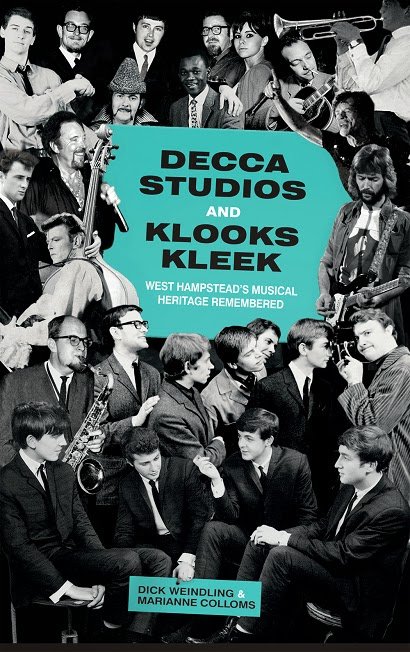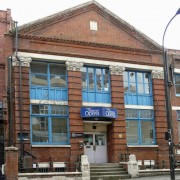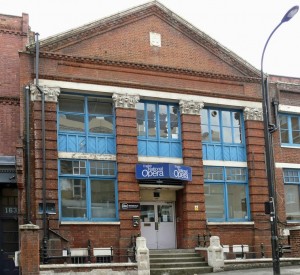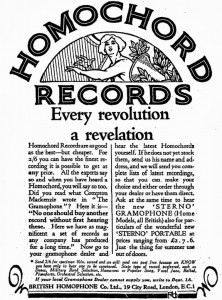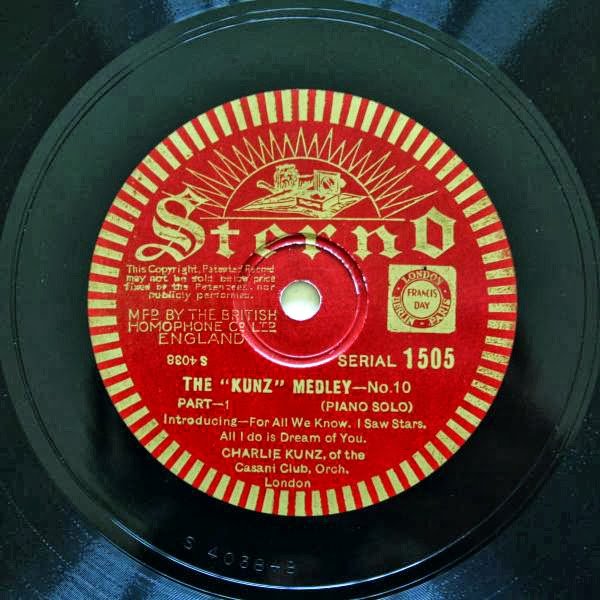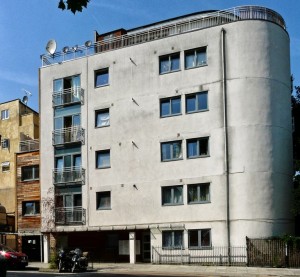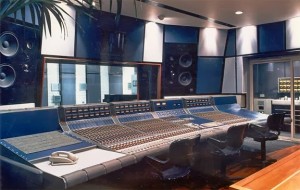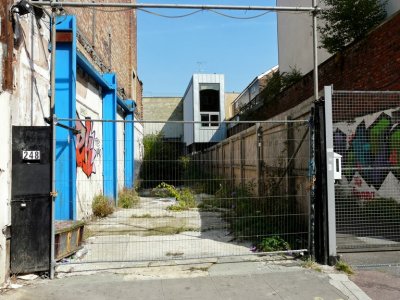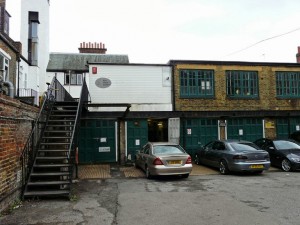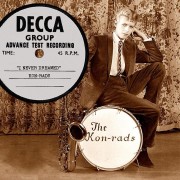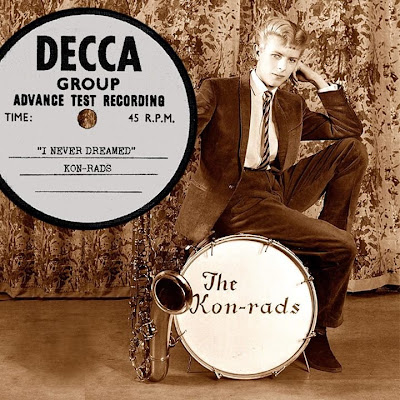Musicians in West Hampstead and Kilburn – part one
To coincide with this we will be doing an illustrated talk at West End Lane Books on Monday 18 November at 7.30. Come along to hear the true story about the Beatles failed audition at Decca, the evening that Jimi Hendrix played at Klooks, as well as the other great people who played at the club which was run in the Railway Hotel for nine years.
Musicians in West Hampstead and Kilburn
A little while ago I met guitarist Adrian Wyatt and we began talking about the surprising number of musicians who had lived in the area. Ade has been involved in music for many years. In 1975 he moved into Tower Mansions in West End Lane, and for two and a half years worked in Macari’s Music Shop in the Charing Cross Road, selling guitars, keyboards, and amps. The punk movement was blossoming, so one minute he was serving Mickie Most, the next, Mick Jones and Glen Matlock.
In 1978 Ade went to Australia for six months with a rock concept band called World, and when he returned he found his flat was playing host to a whole swathe of new rock and roll neighbours. These included, Wilko Johnson, Jean-Jacques Burnel, Lemmy and ‘Philthy’ Phil Taylor, Billy Idol and Steve Strange.
From July 1980 to June 1981 Ade operated the sound system at The Moonlight Club at The Railway Hotel. Here he heard early gigs by everyone from Pigbag to Tenpole Tudor, Birthday Party to Joy Division, Altered Images to The Pretenders, Flock of Seagulls to U2, Depeche Mode, Squeeze, and ABC.
In the early eighties Ade joined The Vibrators (Mark IV) and he has played and toured with many bands. As a session guitarist he played with Joe Egan, B.A Robertson, Maggie Bell, and Oleta Adams. He is currently in the band ‘Dakota Red’ with singer-songwriter Sara Eker. She also lived locally in Dennington Park Road.
In addition to Ade Wyatt, thanks are due to Dean Austin, Wally Smith, Pat Wilkinson, Adam Sieff, Phil Shaw, Steve York, Val Simmonds, Brian Wilcock, James Moyes, Dave Kemp and Peter Murray for their help in identifying some of the musicians.
The following list of musicians is roughly in chronological order and as it has grown considerably, we will publish it in two blog stories. We have not covered classical musicians who lived here.
This is the most comprehensive list of people ever produced and we hope you find some surprises here. You can find lots of examples of the musicians work by searching on YouTube.
Max Jaffa – 5 Hillcrest Court, Shootup Hill
Violinist and band leader. Max lived in this block of flats for about two years in the 1930s. At the time his neighbours in Hillcrest Court were Joe and Elsa, the parents of Joan and Jackie Collins. Max Jaffa got his big break in 1929 with weekly BBC radio broadcasts. His ‘Palm Court’ style was very popular and in 1960 he did a summer season at Scarborough which he repeated for the next 27 years.
Joe Loss – 16 Kendall Court, Shootup Hill
The famous bandleader moved here in the late 1930s. His record of ‘Begin the Beguine’ sold over a million records in 1939. Astonishingly, he was awarded a 50 year contract with EMI and he played several times for the King and Queen at Buckingham Palace.
Maurice Elwin – 16 CanfieldGardens
Born Norman McPhail Blair, Elwin’s obit in the local paper described him as, ‘one of the most recorded artists in the world.’ He made hundreds of 78rpm recordings under no less than 30 pseudonyms. He began in his native Glasgow singing ballads, moving on to popular songs and composing. In the 1920s and 1930s he regularly appeared with the Savoy Orpheans, the hotel’s big band led by the American Carroll Gibbons. There’s a short film of the band on British Pathe, http://www.britishpathe.com
Maurice died in 1975 and was buried in HampsteadCemetery.
Wally Shackell – Bridge Street and 12 Hillfield Road
Singer Wally Shackell was born in Bridge Street at the bottom end of Kilburn in 1933. This area has since been redeveloped. In 1957 he joined The Five Dallas Boys and recorded ‘Shangri-La’ which was a minor hit. Most of the band came from Leicester and they appeared regularly on the TV shows, Six Five Special and Oh Boy. As a result of this they became national stars with a fan club of over 5,000 members. Wally went solo under the name of Jerry Angelo and made five records between 1959 and 1962, but they weren’t big hits. He now lives in Australia.
Dusty Springfield – 104 Sumatra Road
Dusty Springfield is considered by many people to be the greatest British soul singer. Her real name was Mary Isabel Catherine Bernadette O’Brien, and she was born at 87 Fordwych Road on 16 April 1939. This was long believed to be the family home, but we found that the writer Jackie Collins was born at the same address, which was in fact a maternity home. Dusty was the daughter of Gerard and Catherine O’Brien, who lived at 104 Sumatra Road from about 1933 to 1939. Her father, who had grown up in India, was a tax consultant at 97 Lauderdale Mansions, Maida Vale. By 1944 they had moved to High Wycombe. Some years later they moved again to Ealing.
After leaving school in 1958 Dusty answered an advert for a female singing trio called the ‘Lana Sisters’. Then in 1960 she joined her elder brother Dion (who became Tom), and Reshad Field, to form The Springfields, a pop-folk trio. In 1963 she began her solo career with ‘I Only Want to Be with You’, which reached Number 4 in the charts. Her most famous songs were ‘The Look of Love’ which was featured in the Bond film ‘Casino Royale’ (1967) and ‘Son of a Preacher Man’ (1969). In 1998 she was awarded an OBE. Dusty was diagnosed with breast cancer in 1994 and she died in March 1999.
Mike Hurst – 7 Priory Road and Brondesbury Road
In 1962 Mike Hurst joined Dusty Springfield and her brother Tom in The Springfields. That year they had their biggest hit ‘Island of Dreams’ which reached number 5. They split up in October 1963. Mike formed a band called The Methods with the seventeen year old Jimmy Page on guitar. They played country rock and toured with Gene Pitney, Cilla Black and Billy J Kramer. In 1965 Mike Hurst rented a flat in Priory Road. This was the same flat that bass player John Paul Jones and Madeline Bell of Blue Mink later occupied. Mike Hurst became a record producer and worked with Andrew Loog Oldham and Mickie Most. Hurst produced records for Marc Bolan, Cat Stevens, Spencer Davis and Manfred Mann. He later lived in Brondesbury Road.
Edric Connor – 27 Crediton Hill
Edric was a pioneering calypso singer from Trinidad who came to England in 1944. In 1951 he brought the Trinidad Steel Orchestra to the Festival of Britain. In 1952 with his band Edric Connor and the Caribbeans, he recorded the album ‘Songs from Jamaica’. This included ‘Day Dah Light’ a version of which became Harry Belafonte’s big hit, ‘Day-O’, or ‘The Banana Boat Song’, in 1957.
Edric lived in Crediton Hill from 1957 and his daughter went to school with Marianne. With his wife Pearl he set up an agency to support black actors and musicians. In 1958 he became the first black actor to appear in the Royal Shakespeare Company in Stratford. He appeared on TV and in 18 films, including ‘Fire Down Below’ with Rita Hayworth and Robert Mitcham. Edric died in Putney in 1968 and Pearl died in 2005.
Phil Seaman – Goldhurst Terrace
Phil was a renowned jazz drummer who played with all the key figures in the 1950s and 1960s. In 1964 he played with Alexis Korner and Georgie Fame. He taught Ginger Baker and played on his Air Force album in 1970. He was a heroin addict and died in October 1972 in Lambeth.
Tony Meehan – 18 Sidney Boyd Court, West End Lane
Tony grew up in Kilburn and he went to Kingsgate primary school with Dick Weindling. He bought his first drum kit in Blanks music store on the Kilburn High Road. He played in the house band at the 2 I’s in Soho and with the skiffle group The Vipers. From 1959 Tony was the drummer in Cliff Richard’s band The Shadows until October 1961, when he joined Decca as a trainee producer. On 1 January 1962 he was at the famous audition when Decca turned down the Beatles. In 1963 he worked with his friend from the Shadows, Jet Harris, and had a number 1 hit with ‘Diamonds’ which featured two future Led Zeppelin members, Jimmy Page and John Paul Jones. His style influenced other drummers. Sadly, Tony died after a fall in his London house in 2005.
Screaming Lord Sutch– 241 Fordwych Road and Glengall Road
David Edward Sutch was born at New End Hospital in 1940. His parents William and Annie Emily, lived in two rooms at 241 Fordwych Road. His father, a war reserve police constable, crashed his motorbike and died in September 1941 when David was only ten months old. With no money, his mother, known in the family as ‘Nancy’, moved to a single room in Glengall Road. David went to school at Salusbury Road and then they moved to South Harrow. At the end of the 1950s he first performed at the 2 I’s club. The ‘Savages’ were formed in 1960 and he called himself Screaming Lord Sutch after Screaming Jay Hawkins. His outrageous appearance and performances gained the band publicity. From 1963 he stood in parliamentary elections for the National Teenage Party and founded the Official Monster Raving Loony Party in 1983. He contested over 40 elections with little hope of winning. Depressed after the death of his mother the year before, Sutch committed suicide in 1999.
Gary Grainger – Dibden House, Maida Vale
Gary was born in Kilburn in 1952 and grew up in Dibden House (where Sir Bradley Wiggins lived). After trying drums Gary took up the guitar and joined the band Strider who made two albums in the 1970s. He then worked with Rod Stewart’s group. Gary lived in the US for five years and did two world tours with Rod. During this time he also wrote songs for Rod’s albums. In 1981 he returned to England and wrote for Paul Young and then worked with Roger Daltrey during 1986 and 1987. In 1991 he formed the band The Humans with Jess Roden, and Jim Capaldi. Steve Winwood played organ on their recordings. In 1998 he formed the Blues Club. He is still touring the UK and Europe with colleagues from earlier bands.
Sandy Brown – 97 Canfield Gardens
The legendary New Orleans style jazz clarinettist Sandy Brown was born in India where his father worked as a railway engineer. He grew up in Scotland and moved to London in 1954. Sandy lived in Canfield Gardens from about 1959. He was an acoustic engineer and in 1968 he formed Sandy Brown Associates which eventually had an office in West Hampstead. Sandy designed the Moody Blues ‘Threshold Studios’ when they took over one of the Decca Studios in Broadhurst Gardens. He had his own band and played with numerous jazz musicians including Humphrey Lyttleton and Al Fairweather. Sandy played locally at Klooks Kleek, the jazz and blues club which was held in the Railway Hotel from 1961 to 1970. Sandy died in March 1975.
Colin Purbrook, Tony Coe, Brian Lemon and Jimmy Deuchar – 4 Fawley Road
Known as ‘Bleak House’ from the terrible condition it was in, Sandy Brown said that about 50 jazz musicians in the 50s and 60s lived in this house in Fawley Road. Colin Purbrook and Brian Lemon were pianists. Tony Coe was a sax player and Jimmy Deucher played trumpet.
Colin was ‘The Grand Vizier’ of parties in Fawley Road where he lived from 1961 to 1964. He died in 1999 and Steve Voce wrote a wonderful obituary in The Independent.
When his ex-wife, Maureen visited Colin in a Hospice in Hampstead, she told the consultant that Purbrook was one of the 10 best jazz pianists in the country. Later she told him what she had said. Purbrook, by now barely able to speak, croaked ‘Five, Dear. Five’.
Tucker Finlayson – Hillfield Road
Tucker Finlayson played double bass in various Scottish bands in the late fifties. After his National Service in the RAF he came to London. In 1963 he joined the Terry Lightfoot Band. The following year he joined the Acker Bilk Band and still plays with them. He has played bass with many other musicians, including Ray Davies’s album The Storyteller (1998).
Jack Bruce – Alexandra Mansions and 25 Bracknell Gardens
Bass player Jack Bruce was classically trained at the RoyalScottishAcademy of Music but also played jazz and blues. In 1962, soon after he arrived in London, he shared a flat with trombonist John Mumford on the top floor of AlexandraMansions on West End Green. On 26 September 1964 Jack married Janet Godfrey, who was the secretary of the Graham Bond fan club and who later helped with the lyrics of some of the Cream songs. They moved to a flat at 25 BracknellGardens, just off the Finchley Road, and not far from Jack’s old home. Jack and Ginger Baker played in the Graham Bond Organization and then with Eric Clapton they formed the Supergroup Cream in 1966. Harry Shapiro has produced a very good biography, ‘Jack Bruce: composing himself’ (2010).
Mick Jagger and Keith Richards – 33 Mapesbury Road
Mick and Keith had moved to a £9 per week flat on the top floor of 33 Mapesbury Road in 1963, after leaving 102 Edith Grove. The Stones manager and record producer, Andrew Oldham, joined them in Mapesbury Road in early 1964. He says in his autobiography ‘Stoned’ that he locked Mick and Keith in the flat for several hours and wouldn’t let them out until they had written a song.
Chris Jagger – Kingsgate Road
In 1982 Mick’s younger brother, singer Chris Jagger, lived in a house that Mick bought in Kingsgate Road. He released his first albums in 1973 and 1974. He has worked as a journalist and radio presenter. In 1994 he made a third album after a 20 year gap and his style has incorporated cajun, folk, country, blues and rock.
Tony Hooper – 32 Dennington Park Road
Tony Hooper, guitarist, was a tenant in the early 1960s. With Dave Cousins he founded The Strawbs in 1964. He left the band in 1972 and then re-joined them in 1983. Tony didn’t tell the landlady he was in a group and she was furious when she found out. The band members met to record a demo tape and the landlady’s daughter was told to run up and down a short staircase above their room, wearing hard, wooden ‘Dr Scholl’ sandals. The dreadful noise destroyed all hope of their recording.
Glen Hughes – Lymington Road
Glen was a very talented baritone sax player who regularly played at Klooks Kleek in the Railway Hotel. In 1964 he was part of Georgie Fame’s highly successful Blue Flames. But in 1966 Glen tragically died in his flat in Shepherds Bush. Fellow sax player Dick Heckstall-Smith said: “Glen died in bed with a cigarette in his hand, drugged unconscious with smack. Glen was, in my opinion, one of the best baritone players the world has seen.”
Paul Soper – 350 Finchley Road
Guitarist and bass player, Paul lived with his elder brother in Finchley Road from 1964 to 1966. During this time he regularly visited Klooks Kleek, the jazz and R&B club at the Railway Hotel, where he saw many of the top blues bands. Paul has played with various blues bands including Bluejuice and the Bluesdragons. He still plays at various London pubs. See his interesting memories of the top British blues bands at; http://www.britishbluesarchive.org.uk/eyewitness.php
Olivia Newton John – 9 Dennington Park Road
Olivia was born in Cambridge in 1948 and went to Australia when she was five. Her father Bryn was an academic, who became the Dean of Ormond College, Melbourne University. She appeared on Australian radio and TV shows. About 1965 she returned to England and lived in Dennington Park Road. Her first single, ‘Till You Say You’ll Be Mine’, was recorded at the Decca Studios, Broadhurst Gardens, in 1966. Towards the end of the summer 1966 she met Bruce Welch, guitarist with The Shadows. He was 24 and married at the time, she was 17. They dated from September 1966 and lived together. In 1969 they moved from a flat overlooking Lords to Hadley Common, Tottridge. She became best known for her role in the film ‘Grease’ in 1978 with John Travolta. From then on her singing career blossomed and she still tours today.
Joan Armatrading – Cholmley Gardens
Joan joined a repertory production of Hair in 1968 and shared a flat with Helen Chappelle, in CholmleyGardens. Her first album, Whatever’s for Us, was released in1972. She had considerable success in the 1970s and 80s. Her biggest single hit was ‘Love and Affection’ in 1976 which went to Number 10.
Bert Jansch – 16a Christchurch Avenue
Bert Jansch was born in Glasgow in 1943. He and fellow guitarist John Renbourn shared a flat in Kilburn in 1966. In 1968 with Renbourn, Jacqui McShee, vocals, Danny Tompson, double bass, and Terry Cox drums, he formed Pentangle, a very successful folk rock group. Thompson and Cox had previously played with Alexis Korner. In May 1967 Pentangle had a sell-out concert at the Royal Festival Hall. Jansch left the band to work solo in 1973. Pentangle reformed in 1982 and with various musicians continued to 1995. Their combination of folk, rock and jazz influenced later musicians. Bert Jansch died in Kilburn in October 2011
Roy Harper – Fordwych Road
In 1966 he was living in Fordwych Road and his first album, Sophisticated Beggar, was made that year. Singer songwriter and guitarist, Roy Harper has made over 30 albums. His work has influenced Jimmy Page and Robert Plant of Led Zeppelin, who named a track ‘Hats Off to Harper’ after him. Other musicians who say they have been influenced by him include; Pete Townsend, Kate Bush, Pink Floyd and Ian Anderson of Jethro Tull. In 1965 he had a residency at the folk club Les Cousins and he met John Renbourn, Bert Jansch, Alex Korner, and Paul Simon. Roy Harper played at numerous venues including the Lyceum and Klooks Kleek in West Hampstead. In 1968 he played at the first free concert at Hyde Park with Jethro Tull, Tyrannosaurus Rex and Pink Floyd. He is still performing today.
John Paul Jones – 7 Priory Road
Born as John Baldwin, he played bass in various bands and did a large amount of session work. In 1968 with Jimmy Page, Robert Plant and John Bonham, he formed Led Zeppelin. Before he joined the band he lived in a flat in Priory Road. He recently played with Seasick Steve at the Glastonbury Festival.
Michael and Peter Giles, Robert Fripp – 93 Brondesbury Road
In 1967 and 1968 Giles, Giles and Fripp who became King Crimson, lived in Kilburn. Their 1968 home recordings were later released as ‘The Brondesbury Tapes’. Their first album ‘In the Court of The Crimson King’ (1969), initially received very mixed reviews, but has since gained classic status. They released another 12 albums by 2003.
Lulu and Maurice Gibb – Priory Place.
Lulu and Maurice each had long and successful careers. Lulu was born in Glasgow and when she was fifteen her 1964 recording of ‘Shout’ in the Decca Studios in West Hampsteadreached the top ten in the UK. With his brothers Robin and Barry, Maurice Gibb formed the Bee Gees in 1958. They achieved world-wide success with their music for the soundtrack of the film Saturday Night Fever in 1977. Lulu and Maurice were married in 1969 after they had met during a Top of the Pops TV show. Maurice and Lulu lived in one of the modern houses at the Belsize Road end of Priory Place. They later moved to Compton Avenue near Highgate and were divorced in 1973. Maurice died in 2003.
Andy Ellison – Sumatra Road
He was the singer with John’s Children, Jet, and Radio Stars. In 1967 Marc Bolan joined John’s Children, and they toured with the Who and managed to upstage them, with Ellison ripping open feather pillows and diving into the audience. Jet was a glam rock band formed in 1974. Radio Stars started in 1977 and released three albums. They made their TV debut on ‘Marc’, Marc Bolan’s show.
Marmalade – Douglas Court, Quex Road
The Glasgow band, the Gaylords named after the post-war street gang the Chicago Gaylords was formed in 1961. They met the Tremeloes who suggested that they should join manager Peter Walsh, who also managed The Bay City Rollers, Billy Ocean, The Troggs and Blue Mink. In 1966 he renamed them as Marmalade and got them a residency at The Marquee Club in 1967. Their biggest hit was ‘Ob-La-Di, Ob-La Da’ which they were given by Dick James of NEMS in 1968. At the time they recorded it they did not realise it was written by Paul McCartney. The record topped the UK charts in January 1969. They signed to Decca in November 1969. Their other hits were ‘Reflections of My Life’ which went to number 3 in 1969 and later sold two million records. ‘Rainbow’ also went to number 3 in 1970. At this time the band consisted of Junior Campbell, Dean Ford (Thomas McAleese), Alan Whitehead, Graham Knight, and Pat Fairley and when in London they lived at Douglas Court.
Root Jackson – Sumatra Road
Root had a hit with his cousin Jenny with ‘Lean on Me’ in 1969. He has been a member of groups such as FBI (1976), The Breakfast Band (1989), and the GB Blues Company. A track on his album Funkin’ With Da Blues (2011) is called ‘Kilburn High Road Blues’.
Gaspar Lawal – West Hampstead
Gaspar is a Nigerian-born African drummer and percussionist who came to London in the mid 1960s. He has recorded with a very wide range of musicians including: The Rolling Stones, Ginger Baker’s Airforce, Stephen Stills, Joan Armatrading, and Barbra Streisand. In 1975 he joined the rock band Clancy and in 1978 he formed his own group Afrika Sound. In the 1980s he worked with The Pogues, UB40 and Robert Palmer.
Dick Heckstall-Smith– 5 Eden Mansions, Gondar Gardens
Dick Heckstall Smith was an outstanding tenor sax player with Blues Incorporated, John Mayall, the Graham Bond Organization, Jon Hiseman’s Colosseum and Big Chief. He had lived in Gondar Gardens since 1972 and continued playing despite ill health, until his death in December 2004.
James Moyes – West Hampstead
James is a guitarist and composer who still lives in West Hampstead. He formed Sagram with sitarist Clem Alford and tabla player Keshav Satte. In 1971, with the addition of singer Alisha Sufit, they became Magic Carpet. They played at the 100 Club, and Cleo Laine and John Dankworth’s Wavedon, plus other clubs and venues.Their 1972 album ‘Magic Carpet’ was described as ‘one of the finest Indian-influenced psychedelic folk albums of the 1970s’.
Robert Palmer – Dennington Park Road
Singer Robert Palmer lived in a basement flat in Dennington Park Road in 1972. Robert moved out of after the flat was flooded, destroying most of his belongings. He married and moved to New York. Then about 1976 he moved to Nassau in the Bahamas.
After working with several bands Palmer and Elkie Brooks formed Vinegar Joe and they released their first album in 1972. His first solo album, Sneakin’ Sally Thorough The Alley, was recorded in New Orleans in 1974. Palmer had a successful career and a number of major hits. His iconic music videos for ‘Addicted to Love’ (1985) and ‘Simply Irresistible’ (1988) featured identically dressed women with pale faces, dark eye makeup and bright red lipstick. Robert died in France in September 2003.
Steve York, and Graham Bond – 55 Mill Lane
Bass player, Steve York lived in Mill Lane from 1972 to 1977. He has had a long career playing with many well known musicians and recording numerous records. Beginning with various blues bands in the 60s including Graham Bond and Manfred Mann, in 1971 he joined Dada which had three singers Robert Palmer, Elkie Brooks and Jimmy Chambers. Dada became Vinegar Joe in 1971. Steve said: “I left Vinegar Joe after we recorded our first album and lived in the US for about a year. I let Graham Bond stay in my flat in Mill Lane while I was away on tour in 1973. He was homeless after his marriage broke up.”
Steve recorded with Marianne Faithful on her albums Broken English and Dangerous Acquaintances,
also with Ringo Starr, Chicken Shack, ElkieBrooks, Joan Armatrading, Dr John, Chris Jagger and many others. He played harmonica on Robert Palmer’s Sneaking Sally and Pressure Drop.
Today Steve lives in Mexico. See his website for more details: http://www.steveyork.com/
Graham Bond was a sax player but he was better known for his Hammond organ playing with the Graham Bond Organisation. This amazing group include Jack Bruce, Ginger Baker, and Dick Heckstall Smith. Guitarist John McLaughlin was also in the band in 1963. The GBO were very popular and played 39 times locally at Klooks Kleek. One of his best known tracks was ‘Wade in the Water’ which can be heard live from Klooks on YouTube with a jokey introduction by club owner Dick Jordan: https://www.youtube.com/watch?v=6okZU9O2n1E
Brilliant as he was, Graham had a major drug problem and most of the money he earned was spent on getting a fix. He may also have been suffering from schizophrenia. Steve York, a good friend who supported Graham said, “When I returned from the US, Graham was in bad shape and he stayed with me intermittently in Mill Lane until May 1974. He told me that if it hadn’t been for Mill Lane, he would have finished it all. But even so, things were so bad that before I got back, he had collapsed in the street suffering from malnutrition and had to be admitted to hospital.”
Things got worse and tragically, Graham committed suicide by jumping in front of a train at FinsburyPark station on 8 May 1974. For an excellent biography see, ‘Graham Bond: the mighty shadow’, by Harry Shapiro, 1992 and 2005. The book includes a detailed discography.
Jeff Bannister – Holmdale Road
Keyboard player Jeff Bannister lived in Holmdale Road in 1972. He had worked with Alan Bown in the John Barry Seven who had supported visiting American acts such as Brenda Lee. When Barry disbanded the group in 1965 because of his increasing film work, Jeff joined Alan in the Alan Bown Set. Jeff sang and played organ and piano on the first singles produced by Tony Hatch, and then Jess Roden became the vocalist. When the Alan Bown Set split up in 1970 Jess Roden formed Bronco and Jeff played on their first album. In the mid 70s he joined The O Band and then toured with Charlie Dore and latter Gerry Rafferty. He continued writing songs and played on Joan Jett’s ‘Bad Reputation’. He also wrote the books, The Multichord for All Keyboards, and a history of The Alan Bown Set. Jeff is still performing today as a member of The Swinging Blue Jeans, which originated in Liverpool in the 1960s.
Wilko Johnson, JJ Burnel, Steve Strange, Lemmy and Phil Taylor – Tower Mansions, 134-136 West End Lane.
While Ade Wyatt was in Australia in 1978, Wilko Johnson the guitarist in Dr Feelgood with the distinctive choppy style, rented his flat in Tower Mansions. He had formed the Canvey Island band with singer Lee Brilleaux in 1971. Sadly this year, Wilko announced that he is retiring because he has terminal cancer.
Jean-Jacques Burnel the bass player with The Stranglers lived upstairs in Tower Mansions. He had been with the group since they formed in 1974. Steve Strange had just arrived from Wales where he had previously met JJ Burnel at a Stranglers gig. Steve and Billy Idol squatted in the basement of Tower Mansions. One day the local postman saw Steve and his girlfriend Suzy with their dyed spiky hair and said, “You two are an odd looking couple, you’re Mr and Mrs Strange”. They liked the idea and called themselves Steve and Suzy Strange. After playing in several other bands, Steve formed Visage in 1979. He appeared in the David Bowie video, ‘Ashes to Ashes’ and Visage had a hit with ‘Fade to Grey’ in 1980.
‘Lemmy’ (Ian Fraser Kilmister) and ‘Philthy’ Phil Taylor, drums, were in Motorhead. Both lived at Tower Mansions during the late 1970s and 1980s. Motorhead was formed in 1975 and they have made twenty albums. Still performing today, Lemmy is the only remaining member of the original band.
Billy Idol – Tower Mansions, and 315 West End Lane
Billy Idol also lived for a short time in Tower Mansions. He and his girlfriend Perri Lister, who was an actress and dancer in Hot Gossip, were together from 1980 to 1989. They were a very distinctive couple when they lived in West End Lane in a flat above Fortune Gate, the Chinese Restaurant near the Fire Station in West Hampstead. Billy Idol in Generation X was one of the first punk bands to appear on Top of The Pops. In 1981 he moved to New York and the following year he had a major success with ‘White Wedding’ when the video was shown on MTV.



